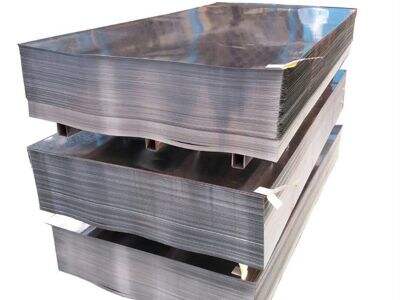Do you know how strong is a steel pipe? You may also have asked how do people find out how hard is a Stainless steel pipe. In this article, we are going to discuss the science behind checking the hardness of iron pipes. So far, in this chapter, we are going to learn about two different and significant testing hardness methods called Brinell and Rockwell. These tests allow us to understand how strong the steel is, and how well it holds up under tension.
What’s the Difference?
The test types of the hardness test: Brinell, Rockwell. They both assess how well a material, such as steel, resists gouging or denting. This is how they do it, but in different ways, making each method unique.
The Brinell test uses a large metal sphere which presses forcefully onto the steel. The ball creates a dent when it presses into the steel. Then we put it under a microscope and really look very closely at the size of that dent.” The harder the steel, the less the dent. The bigger the dent, the softer the steel.
The Rockwell test operates somewhat differently. It employs a smaller implement, cone- or ball-shaped, to press the steel down. This changes how much force it applies depending on how deeply it penetrates into the steel. A microscope measures the depth of the dent after pressing. The ding is deeper, the softer the steel is. This will allow us to see how the steel holds up to marking.
A Complete Guide to Steel Pipe Hardness Tests
Now let’s take a deeper dive into the science behind these hardness tests. These tests are primarily designed to determine the acceptability of the steel to be blotched, dented or scratched. That means that steel is tougher and does not easily deform or break. That's an important quality for steel used to build items that must withstand the elements over a long time, like bridges or buildings.
These tests are used by manufacturers to ensure that the steel pipes are sufficiently hard for their intended use. In other words, they see if those pipes can withstand the weight or pressure they'll experience in real life. The hardness of the steel is critical because it can determine the life of the steel, its strength, and its wear resistance.
Understanding Values Of Hardness
The tests Brinell and Rockwell both provide us a figure which indicates how hard the steel is. In the case of a Brinell test, the hardness number is obtained by dividing the force that was used to press the ball by the diameter of the dent that was formed. A higher hardness number indicates a stronger force and a smaller dent. For the Rockwell test, we measure the hardness number by measuring how deeply the dent penetrated. The more the dent, the lower the hardness number.
Higher numbers from these tests indicate harder steel. Keep in mind that they're different numbers, so manufacturers typically register to a certain method to have consistency. This uniformity is crucial for ensuring that the stainless steel pipe are reliable for their intended use.
You should also realize that different kinds of steel such as stainless steel or different types of carbon steel will have different hardness ratings. Different types of steel have specific usage, knowing the hardness value of each type helps us to know how much it can endure before getting damaged and how strong it is.
Factors Determining Steel Pipe Hardness
Many factors can alter the hardness of the steel. Some of these are heat treatment, surface treatment, and different kinds of metals mixed with the steel. Steel can be heat treated to greatly alter hardness and strength. For instance, rapidly cooling the steel and then reheating it, a technique known as quenching and tempering, hardens the steel tremendously.
Another way to enhance hardness is through surface treatment. Nitrogen, for instance, can be added to the surface of the steel to increase hardness. This is known as nitriding. Hardness of steel pipes can also be influenced by the addition of chromium, nickel or molybdenum. These variables work together to create the overall strength and durability of the steel, and each of these elements provides different properties that ultimately contribute to its formation.
This is done by treating steel pipes with various methods such as heat treatment or through the addition of certain materials, making them harder. But they have to know what each one needs. That means they have to know what the pipes will be used for and how much pressure they will be under outside the lab.
Conclusion
I hope you have enjoyed reading it; however, hardness tests are crucial tests in regards to the making of ss steel pipe. They serve to verify the strength and durability of the pipes — an important indicator for using the pipes in numerous economic sectors, be it the construction industry or the manufacturing sector. By learning more about these hardness tests, we can begin to understand this basic concept. Understanding the science behind Brinell & Rockwell hardness tests is an essential tool for anyone that wants to learn about steel and its applications. Taigang Puxin provides good quality steel pipes which undergo rigorous hardness detection to satisfy standards for it to be safe and reliable for various sorts of projects all over the world.

 EN
EN
 AR
AR
 BG
BG
 HR
HR
 CS
CS
 DA
DA
 NL
NL
 FI
FI
 FR
FR
 DE
DE
 EL
EL
 HI
HI
 IT
IT
 JA
JA
 KO
KO
 NO
NO
 PL
PL
 PT
PT
 RO
RO
 RU
RU
 ES
ES
 SV
SV
 CA
CA
 TL
TL
 IW
IW
 ID
ID
 LV
LV
 LT
LT
 SR
SR
 SK
SK
 SL
SL
 UK
UK
 VI
VI
 GL
GL
 HU
HU
 MT
MT
 TH
TH
 TR
TR
 FA
FA
 MS
MS


